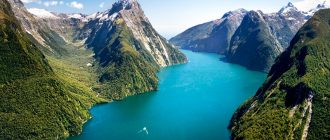Bulgaria – the most detailed information about the country with a photo. Sights, cities of Bulgaria, climate, geography, population and culture.
Contents
Bulgaria (Republic of Bulgaria)
Bulgaria is a country in southeastern Europe, occupying eastern part of the Balkan Peninsula. Washed by the Black Sea and borders in the south with Turkey and Greece, in the west – with Macedonia and Serbia, in the north – with Romania. Bulgaria – parliamentary republic which is part of the European union. This is a surprisingly diverse country, including magnificent beaches and ancient ancient ruins, beautiful sacral monuments and charming ancient cities, impressive mountain chains and scenic woodlands.
Bulgaria is one of the oldest states in Europe. Origins Bulgarian statehood go into the earlier Middle Ages. AT antiquity the country’s territory consistently belonged to the Greeks, Romans and Byzantines. Then for a long time the Bulgarian lands entered part of the Ottoman Empire. Bulgaria throughout its history was located at the crossroads of important trade routes from Northern and Eastern Europe to the Mediterranean, as well as from the Western Europe to the Middle East. That is why the country has an interesting a combination of eastern and western traditions, which can be traced in architecture, culture and even religion. Bulgaria also has magnificent historical heritage – from the tombs of the mighty Thracian kings, ancient Greek theaters and ancient Roman amphitheaters to medieval castles, old churches and Ottoman mosques.
 Flag of Bulgaria
Flag of Bulgaria
- Useful information
- Geography and nature
- Climate
- Best time to visit
- Story
- Administrative division
- Population
- Transport
- Cities of Bulgaria
- sights
- Accommodation
- Kitchen
Useful information about Bulgaria
- The population is 7 million people.
- The area is 110,993.6 km².
- The language is Bulgarian.
- Currency – Bulgarian Lev.
- Bulgaria is not a party to the Schengen Agreement. With holders of valid D and C Schengen visas are allowed to enter country for up to 90 days within six months.
- Time – UTC +2, in summer +3.
- The electrical network voltage is 230 V / 50 Hz.
- Car traffic is right hand.
- Bulgaria as a whole is a very safe country with friendly by locals.
- In restaurants and bars, it is customary to leave tips at the rate of 10% of invoice amount.
Geography and nature
Bulgaria occupies the eastern part of the Balkan Peninsula. Despite the rather modest size, the country has a very diverse landscapes where lowlands and plains alternate with broken mountainous terrain, cut through deep gorges.
Most of the territory of Bulgaria (in terms of relief) is plains and hilly plateaus. Average height above sea level – 470 m
 Rhodope forests
Rhodope forests
Conventionally, the territory of Bulgaria can be divided into four large geographical region:
- Northern Bulgaria is a fertile and hilly Danube Plain, and the Balkan Mountains in the south.
- Southern Bulgaria – Rila-Rhodope mountain range.
- Transition Zone – Upper Thracian Lowland
- Black Sea coast with excellent sandy beaches.
The Black Sea coast in Bulgaria has a length of 400 km
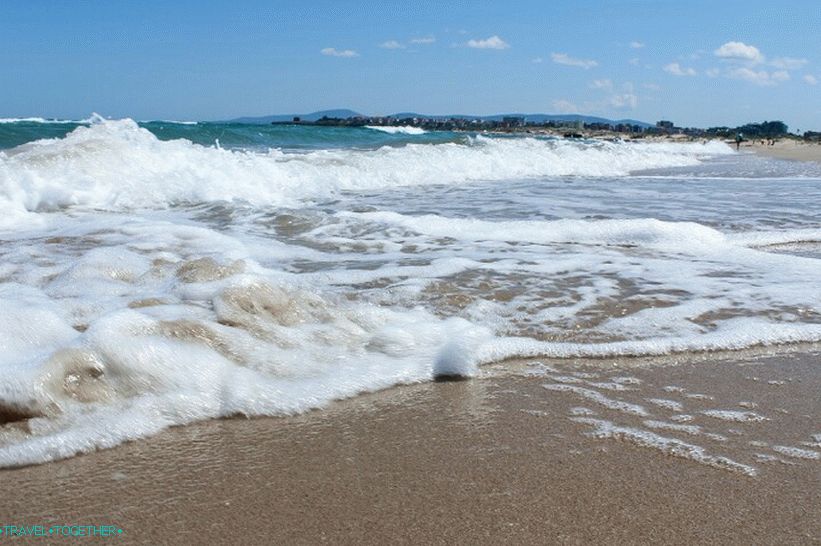 Black sea in Bulgaria
Black sea in Bulgaria
Bulgaria has a rich flora and fauna, which is a projection of an interesting geographical location of the country. On most of its territory, flora and fauna are very similar to Central Europe. In the northeast and southeast meet typical asian animals and plants. The south is rich sub-mediterranean and mediterranean species.
Climate
Most of Bulgaria has a moderate continental climate, which is softened in the south. Interestingly, the continental character Bulgarian climate is most noticeable in winter, whereas in summer it more like the Mediterranean.
The country’s climate is characterized by moderately cold winters with rare heavy snowfalls, as well as hot and dry summers. On coast softer autumn and winter. Subtropical climate southwest characterized by mild winters with lots of precipitation and hot, humid summers.
 Bulgarian provinces
Bulgarian provinces
Best time to visit
The ideal time to visit Bulgaria is spring, summer and early autumn.
Story
The first evidence of human habitation in Bulgaria date from the Middle Paleolithic period. In the Bronze Age these lands were inhabited by Thracian tribes who created the Odrissa kingdom. Then these territories were absorbed by the Greeks and Persians. IN 1 century AD Bulgarian lands were divided between the Roman provinces Mozia (north of the Balkan Mountains) and Thrace (south of the Balkan mountains). The ruins of Roman cities and settlements are concentrated in the area Plovdiv and Varna.
In the 4th century, the territory of the future Bulgaria became a part of Byzantium. With this from the 2nd century AD these lands were constantly barbarous invasions. The history of the modern Bulgarian people begins at 7 – 8th century from the Slavic invasions to the Balkan Peninsula. AT this period Byzantium was absorbed by a long conflict with Persia and could not resist invasions from the north.
The modern name of the country comes from the Bulgar tribe, the origin of which is still subject to academic spore. There are also questions about their influence on the modern language. Bulgaria Bulgars are first mentioned in the sources near the end 5 – th century. They lived in the steppes north of the Black Sea. Bulgarian the tribes consisted of skillful warlike riders driven hanami (leaders).
In the 6th century, the Bulgars were conquered by the Avars. In 635 was created Great Bulgaria, which was attacked by the Khazars. Byzantine Emperor Constantine IV led the army against the Bulgars, but suffered defeat, and in 681 Byzantium recognized the power of Bulgaria over lands between the Balkans and the Danube.
 Veliko Tarnovo
Veliko Tarnovo
In 681, Asparuh founded the First Bulgarian Kingdom. In the 9th century Bulgarians adopted Christianity, the spread of which contributed to the creation of the Slavic alphabet (Cyrillic). Flourishing medieval Bulgarian kingdom is considered the reign Simeone I. In the first half of the 11th century, Bulgaria was subordinated Byzantium and remained subject to more than one and a half centuries.
At the end of the 12th century, the Second Bulgarian Kingdom was formed with center in Tarnovo. This state existed until the end of the 14 century. In 1396, Bulgaria was conquered by the Turks and was part of The composition of the Ottoman Empire until the early 20th century. As a result Russian-Turkish war of 1877-1878 Bulgarian was created principality with wide autonomy. In 1908 it was formed independent Bulgarian kingdom. Interesting that in both world Wars Bulgaria acted on the side of Germany. After World War II war was created socialist republic, which existed until 1989. In 2007 Bulgaria joined the European union
Administrative division
 Administrative division of Bulgaria
Administrative division of Bulgaria
Bulgaria is divided into 28 regions. Areas are divided into communities which has 264.
Administrative division of Bulgaria:
- Blagoevgrad region
- Burgas region
- Dobrich region
- Gabrovo region
- Haskovo region
- Kardzhali region
- Kyustendil region
- Lovech region
- Montana region
- Pazardzhik region
- Pernik region
- Pleven region
- Plovdiv region
- Razgrad region
- Ruse region
- Shumen region
- Silistra region
- Sliven region
- Smolyan region
- Sofia
- Sofia region
- Stara Zagora region
- Targovishta region
- Varna region
- Veliko Tarnovo region
- Vidin region
- Vratskaya area
- Yambol region.
Population
The population of Bulgaria is about 7 million people. Over 80% are ethnic Bulgarians. Large diasporas: Turks, Gypsies, Russians. Most The widespread religion is Orthodoxy, which professes 3/4 population. About 10% of the population of Bulgaria professes Islam. Bulgarians speak Bulgarian. This language refers to South Slavic linguistic branch and uses Cyrillic alphabet.
Most researchers believe that the ancestors of the Bulgarians – is Turkic tribes who came from Central Asia. Modern genetic studies indicate that Bulgarians belong to Western Eurasian and European peoples. Early Bulgarians lived in steppes to the west of the Volga. Bulgarian tribes came to the Balkans at 5 – 6 centuries.
 Black sea in Bulgaria
Black sea in Bulgaria
Bulgarians are incredibly friendly and very sociable. They like usually much more open than some others Eastern Europeans. Most of them are conservative and not very are patient In a conversation with the Bulgarians, it is better to avoid political topics and relations with Turkey.
Transport
There are only four international airports in Bulgaria. located in Sofia, Varna, Burgas and Plovdiv. Large European carriers fly only to Sofia. Cheap charters – to Varna and Bourgas By train to Bulgaria can be reached from Romania, Greece, Turkey and Serbia. The end point of international rail routes is Sofia. Buses to the capital of Bulgaria go from most European cities.
 Fishing Black Sea harbor
Fishing Black Sea harbor
The fastest way to travel around the country is by bus. Traveling by train is cheap, but much slower
Cities of Bulgaria
 Sofia
Sofia
Popular cities in Bulgaria:
- Sofia is the capital and largest city of Bulgaria. Has a beautiful Renaissance center with modern architecture. Sofia is one of the oldest cities in Europe and the main cultural center of the country, which includes 250 historical landmarks and architectural monuments.
- Burgas is the largest city of South-Eastern Bulgaria and a large commercial port with a picturesque promenade.
- Pleven – a historic city in northern Bulgaria, famous Panorama and beautiful parks.
- Plovdiv is the second largest city in Bulgaria and one of its main tourist centers, retaining several magnificent Antique Landmarks. Old Bulgarian style Renaissance “contains many mosques, Catholic cathedrals and Orthodox churches.
- Varna is the third largest city in Bulgaria and its main resort, which is famous for its beaches and nightlife.
- Veliko Tarnovo – a picturesque university city on the river Yantra, which was the capital of medieval Bulgarian kingdom
- Ruse is a magnificent ancient city, called “small Vienna “. Known for an impressive architectural ensemble in the style baroque.
 Plovdiv
Plovdiv
Sights of Bulgaria
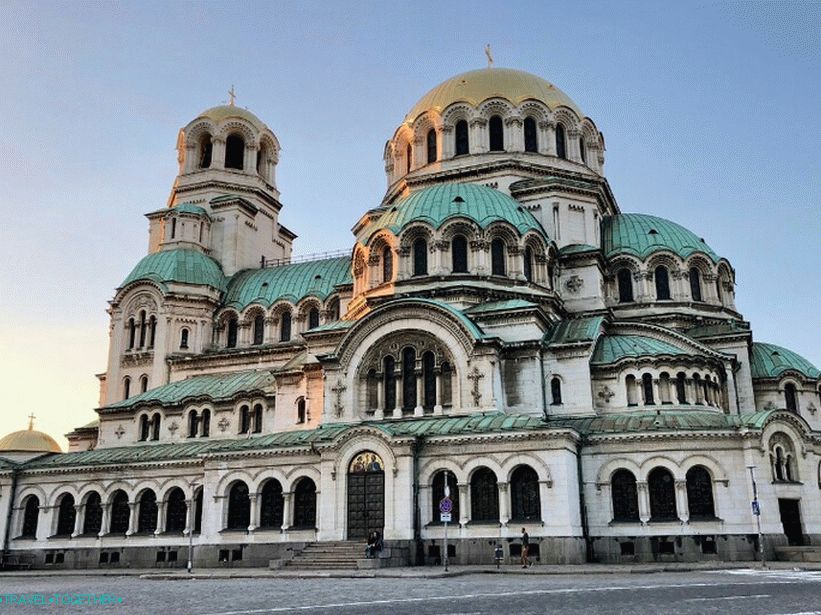 Cathedral Alexander Nevsky
Cathedral Alexander Nevsky
Alexander Nevsky Cathedral is a cult symbol of Bulgaria and one of Sofia’s most famous attractions. This Orthodox the church was built between 1882 and 1912 to honor memory of 200,000 Russian soldiers killed during the Russian-Turkish Wars for the liberation of the Bulgarian people from Ottoman rule empire. Inside the cathedral is decorated with intricate mosaics, paintings and images of saints.
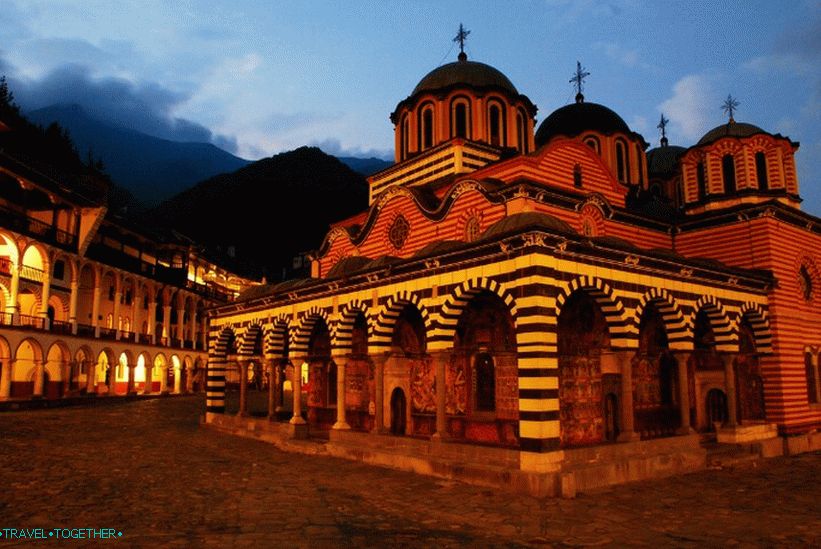 Rila monastery
Rila monastery
Rila Monastery – one of the most important spiritual shrines Bulgaria This important historical and cultural monument was founded in the 10th century.
 Koprivshtitsa
Koprivshtitsa
The historic center of Koprivshtitsa is a prime example Bulgarian national revival and contains many charming winding streets with pretty old ones buildings.
 Buzluja
Buzluja
Buzludzha – a huge monument of the socialist era, built in 1974 by the Bulgarian army. Located on the battlefield between the Turks and Bulgarians, which occurred in 1868. This an impressive flying saucer monument was destroyed after the collapse of the Soviet Union.
 Thracian tomb in Sveshtari
Thracian tomb in Sveshtari
The Thracian Tomb at Sveshtari is a unique archaeological site. a find that dates from the 3rd century BC. Tomb, probably was built for a royal couple of Thracian tribe Geth. This building combines amazing architecture sculpture and painting, displaying impressive carvings and murals. The tomb was discovered only in 1982.
 Fortress Tsarevets
Fortress Tsarevets
Tsarevets fortress in Veliko Tarnovo is an important symbol of the Bulgarian stories. This fortification was built on site. medieval palace of the Bulgarian kings. Represents impressive ruins containing fragments of over 400 houses and several churches.
 Roman theater in Plovdiv
Roman theater in Plovdiv
Roman theater in Plovdiv – one of the best preserved ancient theaters of the world. This magnificent building was built in the 1st century AD during the reign of Domitian. It is believed that Theatrical and famous performances took place here. Gladiator fights. The theater itself is still used for operas and musical performances and seats about 7,000 spectators.
 Nessebar
Nessebar
Nessebar is a charming old town located on rocky peninsula, connected to the mainland road. It is an open-air museum full of beautiful squares, churches and cobbled streets. The history of the city and its monuments cover the Roman and Byzantine era. Here you can see remnants of old city walls and traditional wooden houses, built on solid stone foundations.
 Church Holy Mother of God
Church Holy Mother of God
Church of the Blessed Virgin Mary – Medieval Orthodox Church, located on the territory of no less ancient Asenova fortress. This structure is most likely built in 12 century.
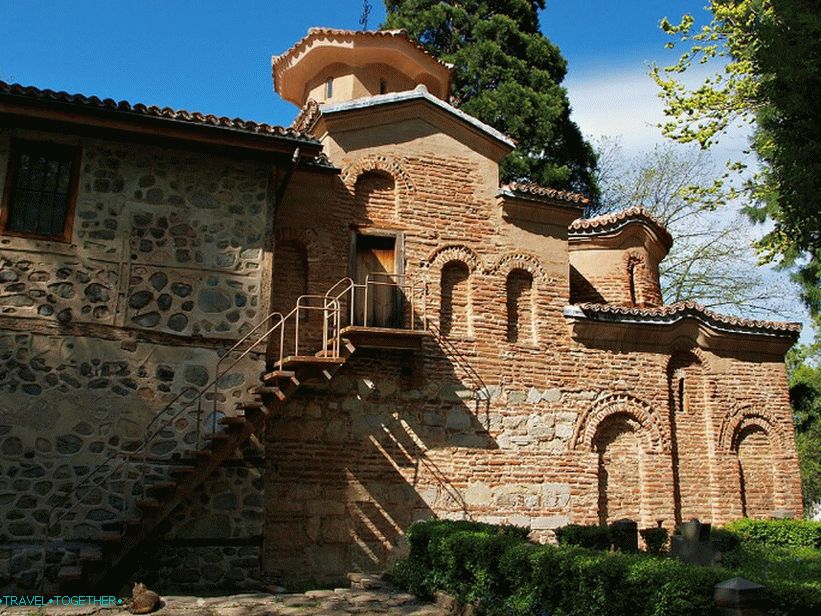 Boyana church
Boyana church
Boyana Church – Medieval Orthodox Church, listed as a UNESCO World Heritage Site. Was founded in the 10th century and located 8 km from Sofia. Most A remarkable feature is the magnificent old frescoes. In addition to the first layer of frescoes 11-12 centuries, of which preserved only fragments, and the famous second layer of frescoes of the 13th century, the church also has several later frescoes 14, 16 and 17 centuries.
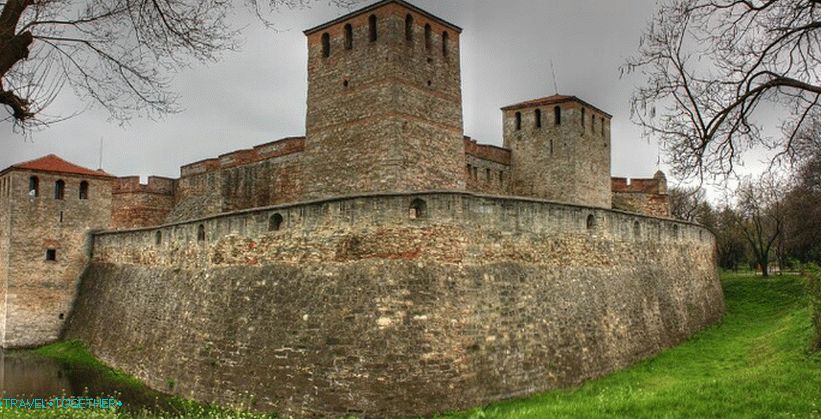 Baba Vida
Baba Vida
Baba Vida – an ancient fortress, which is considered the only fully preserved medieval castle in the country. The construction of the current fortress began in the 10th century on the foundation roman castle. Baba Vida was the main defensive the city of Vidin throughout the Middle Ages and the important fortress of Northwestern Bulgaria. The fortress survived an eight-month siege of the Byzantine troops, but was eventually destroyed. Baba Vida was restored in the 14th century. In the Ottoman period here located weapons depot and prison.
 Belogradchik
Belogradchik
Belogradchik – an ancient fortress located on the northern the slopes of the Balkan Mountains. The first fortification here was founded by the Romans. Modern Belogradchik fortress was built in the 14th century. It has powerful walls up to 2 meters thick and up to 12 meters high, as well as three separate fortified courtyards, which are connected to each other by the gate. Fortress is a cultural monument.
Accommodation
Living in Bulgaria is cheap. Here you can find accommodation almost any price range: from hostels in Sofia and Plovdiv to cheap pensions and hotels on the coast. Bulgaria in general known for offering quality budget accommodation in rural provinces and pretty small towns.
Kitchen
Bulgarian cuisine is a prominent representative of gastronomy. Southeast Europe and is famous for its special diversity. Relatively warm climate and diverse geography have created excellent conditions for growing various vegetables, legumes, Herbs and fruits, which are the main ingredients of local dishes. Most Bulgarian dishes are cooked in the oven, steamed or in the process of extinguishing. Also the Bulgarian cuisine has noticeable Turkish and Greek influences.
 Banitsa
Banitsa
Popular traditional food:
- Banitsa – traditional Bulgarian food prepared from puff pastry with cheese. Also filling can be spinach, mince, potatoes.
- Tarator – cold yoghurt and cucumber soup, popular in summer season.
- Shkembe chorba – meat soup, which is prepared from the rumen (calf stomach).
- Shopsky salad – a salad of tomatoes, cucumbers, green onions, raw or roasted peppers, white cheese.
- Kyopolu is an appetizer cooked mostly from fried eggplants and garlic with the addition of sweet peppers and tomatoes.
- Lyutenitsa – a snack that includes tomatoes, peppers, eggplant, onion, garlic or black pepper.
- Kebapche – minced meat with spices (black pepper or caraway).
- Sarma – a dish of grape or cabbage leaves with minced meat.
- Moussaka – Potato with minced pork.





